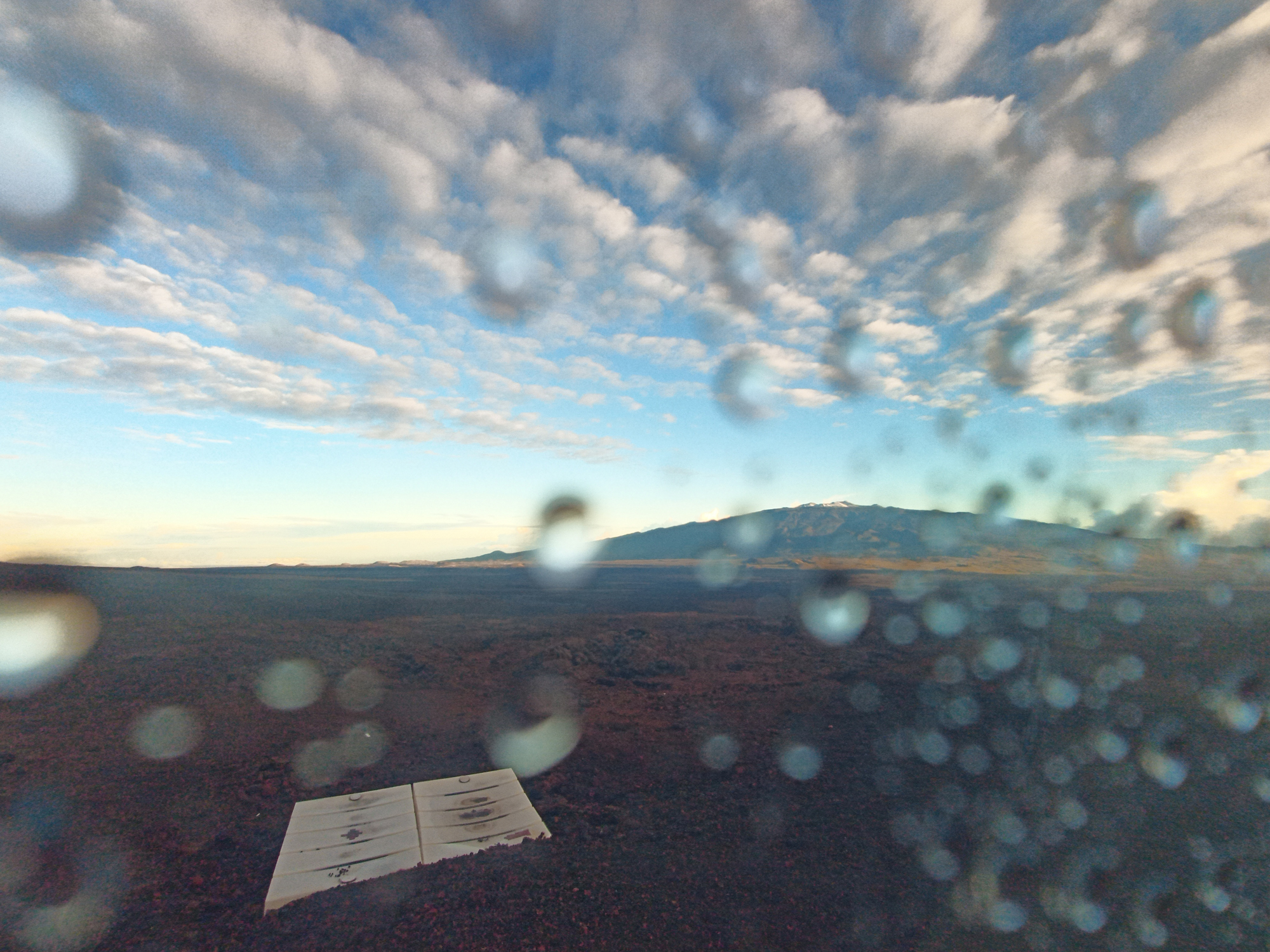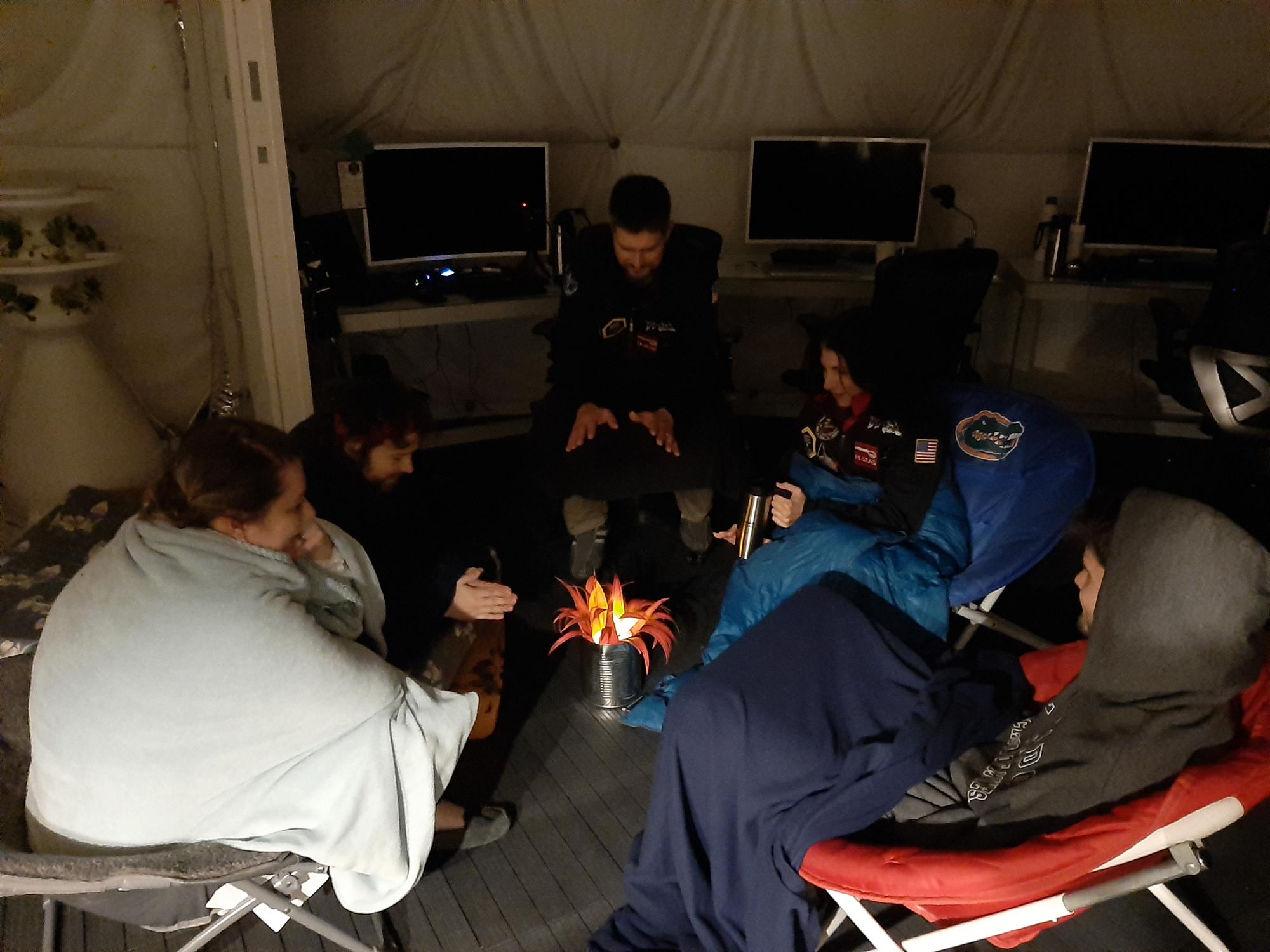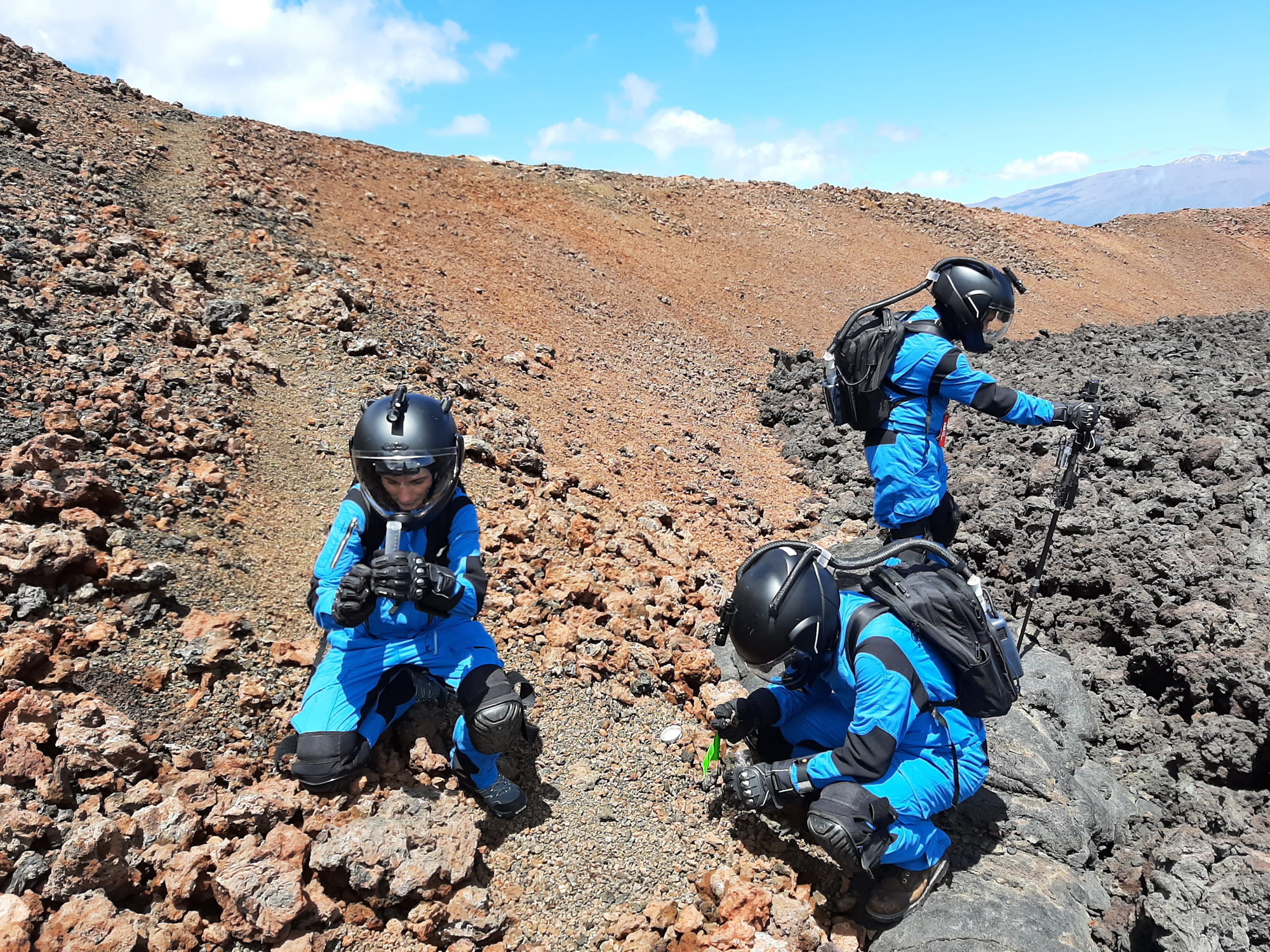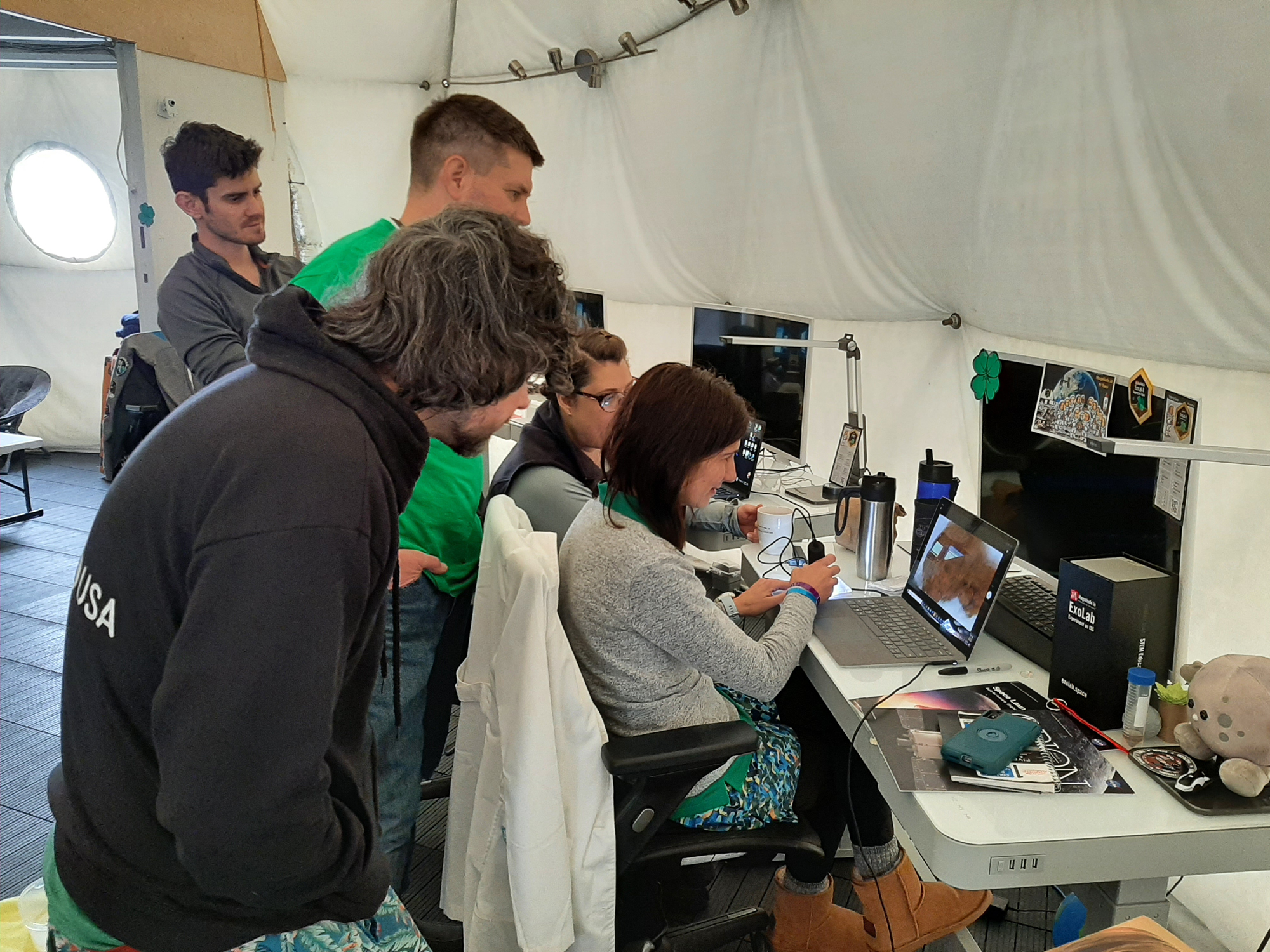HI-SEAS crew struggle to keep up hope as relentless storms foil their 'moonwalks' — Commander's report: lunar day 10
Dr. Michaela Musilova is the director of Hawaii Space Exploration Analog and Simulation (HI-SEAS) program, which conducts analog missions to the moon and Mars for scientific research at a habitat on the volcano Mauna Loa. Currently, she is in command of the two-week Selene IV lunar mission and contributed this report to Space.com's Expert Voices: Op-Ed & Insights.
Commander's report for the Selene IV moon mission at HI-SEAS
Lunar day 10 (March 22, 2021)
Caught in a time loop off-planet — that's how the Selene IV crew have been feeling throughout our lunar analog mission at HI-SEAS. Our "hope, hope some more, give up and repeat" vicious circle has been grinding our resilience down to the ground. It reminds me in many ways of the first episode, called 33, of the "Battlestar Galactica" series remake. The military ship Galactica and its civilian fleet are attacked by Cylons, an android race, every 33 minutes. After a few days of these incessant attacks, the whole fleet is exhausted and ready to give up.
In our case, evil "aliens" on the moon are using "dust machines" to create "dust storms" and force us to stay locked in our lunar habitat. The dust storms (aka fog and rainstorms in Hawaii) disappear for a few minutes to an hour, several times a day, before coming back in full force. At first, my crewmembers would wait and look out the habitat's window in anticipation, full of hope that the dust storms may stay away long enough for us to be able to go on a moonwalk. Then, with time, looking out the window became a chore. Just like in "Battlestar Galactica," the repetition of hope, anxiety and despair multiple times a day drained us physically and mentally.
Related: Fighting aliens with 'Space Force' and clovers at HI-SEAS — Commander's report: lunar day 6
While the jury is still out whether the dust storms are caused by aliens or unusual atmospheric anomalies, it was imperative that we find a way to break our unhealthy cycle. During the day, my crewmembers would keep themselves busy with their research projects and practical "home economics" activities, as we call them. They include sewing, reorganizing our fitness equipment and testing our analog spacesuits. Some of my crew took on new projects, such as performing detailed analyses of local volcanic rocks using an electronic microscope and soil testing kits. Others decided to experiment with cooking and baking using our freeze-dried food supplies to the excitement of the whole crew.
Breaking space news, the latest updates on rocket launches, skywatching events and more!
My favorite moments together on this mission, so far, have been during our storytime around the "campfire." Fire of any kind is not allowed inside the HI-SEAS habitat. It's a small enclosed space, so any potential fire and chemical hazards are prohibited. Instead, we decided to put tiny electronic candles inside a habitat-made paper plant in a metallic can. As bizarre as that may sound, this fake plant-can-candle combo ended up creating the right kind of pleasant campfire atmosphere inside our lunar home. We all huddled around it, covered in blankets, and listened to each other's personal life stories.
I always encourage my crewmembers to open up and tell us more about themselves so that we can get to know each other better. We can learn so much from every person's highs and lows in life, their lessons learned and from their passions. The Selene IV crew bonded more and more with every story that was told. I was very impressed with the details that my crewmembers were willing to share, as well as how quickly they created strong bonds with one another. The level of trust that was formed between us really made us become a family on the moon, which is something I always strive to achieve as a commander.
Just when we distracted each other enough to forget about the dust storms, they disappeared. The crew was ready to go on an extravehicular activity (EVA) or moonwalk within minutes. Finally, the crew was able to explore the analog lunar terrain around the HI-SEAS habitat and I was able to give the crew geology training in the field, since I was not able to give them much hands-on training before the EVA. The whole EVA team collected geological samples and technological data for some of their research projects.
Crew Systems Engineer Bill O'Hara tested the equipment he'll need for mapping some of the lava cave systems that we're planning on exploring during future EVAs. Hopefully, he'll have the opportunity to evaluate the local lava tubes for habitability purposes. Bill also completed almost all of the data collection tasks for his case study of the HI-SEAS habitat's design and operations protocols.
Related: The 9 coolest mock space missions
In Situ Resource Utilization (ISRU) Mission Specialist Cameron Crowell developed a method for pulverizing the analog lunar regolith samples he collected during the EVA. It has been a challenge to find ways to do this safely in the habitat, Cameron thus had to test different methodologies until he was able to break the volcanic rocks into particles smaller than a quarter inch. That included using various items from our habitat's waste to build a contained environment for hammering lava rocks. Cameron found that iron particles could be extracted by attaching a magnet to the outside of the metal lid of a mason jar and shaking the contents, allowing anything magnetic to stick to the lid.
The only other time my crewmembers were able to go on EVA was right when they had given up hope a couple of days later. A couple of them went to take naps or to perform a "regeneration cycle," as they called it. The gloominess of the weather and inability to perform more EVAs had gotten to them. As it happens in life, just when they were resting the dust storms cleared and the rest of us had no other choice than to wake them up. Fortunately, being woken up on mission to go on an EVA usually leads to smiles on people's faces, not frowns, especially as it was the first EVA for Crew Engineer Jack Bryan and Science Communication Officer Monica Parks.
Up to that point, Jack was forced to use scraps from Cameron's experiment for his research project. That is why he was initially only able to produce a small batch of sample composite materials using in situ resources harvested by Cameron and low-density polyethylene (LDPE) habitat waste materials. Facing similar health and safety constraints as Cameron, he encountered challenges when he was trying to create the right kinds of molds for his plastic-rock composites. Jack will be focusing on improving the processing conditions and mixture ratios throughout the rest of the mission.
For Monica, our confinement in the habitat and story sharing led to her collecting a lot of interesting research data. After hearing every crewmember's life story, she found that there are many parallels and similar circumstances each of us has faced. Monica will continue having similar conversations with individuals on Earth who are not into space or in the space industry to see how they compare. She has a theory about how the two types will differ and she is looking forward to processing all of these data.
Crew Operations Officer Lori Waters found that her microgreens experiment added nutrients and flavor to dinner on the harvest days. In this confined and isolated extreme environment, the plant research undoubtedly brought a psychological and physiological boost to the crew, particularly during our low energy days. Lori's clovers, which she is growing for the ExoLab experiment, are thriving in these conditions and showing early signs of root nodulation nine days after planting.
Commander Musilova signing off relieved that we survived the attacks of our lunar aliens. The crew is hoping that we broke our own 33-minute cycle of sorts, but you never know what the next day on the moon will bring. We'll continue to cling to all of the hope that we can muster and hold each other's spirits up with the endless one-liners that my crewmembers keep on dropping.
Follow Michaela Musilova on Twitter @astro_Michaela. Follow us on Twitter @Spacedotcom and on Facebook.
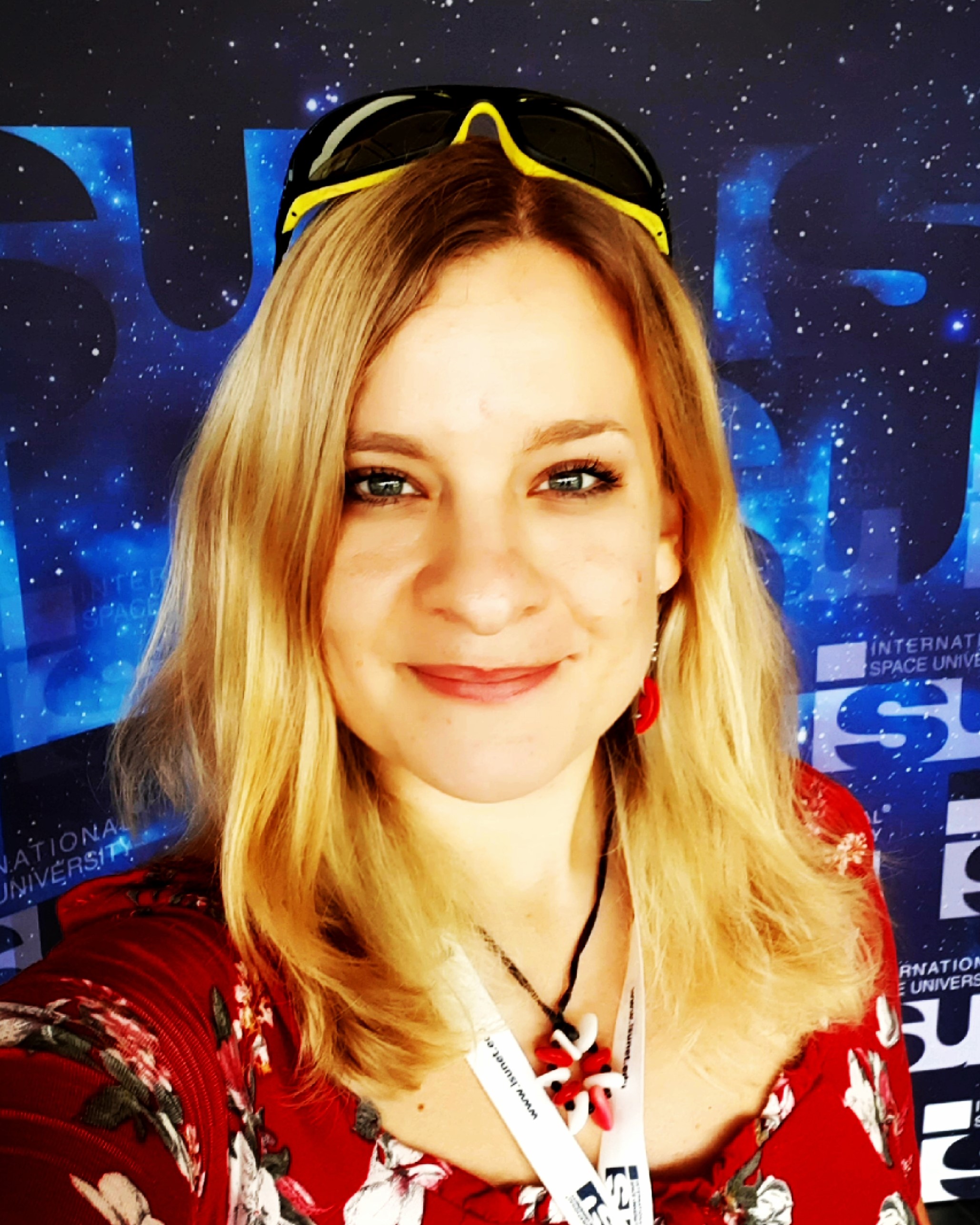
Dr. Michaela Musilova is an astrobiologist with a focus on life in extreme environments. She has a PhD degree from the University of Bristol and is a graduate from the International Space University's (ISU) Space Studies Program. Michaela's space research experience includes working at the NASA Jet Propulsion Laboratory, University of London Observatory, Canada-France-Hawaii Telescope, on NASA's and the U.K. Space Agency's MoonLite project, being an analogue astronaut and Commander of numerous simulated missions to the moon and Mars at the HI-SEAS station in Hawaii, and at the Mars Desert Research Station in Utah. Michaela is currently the Director of HI-SEAS, as part of the International MoonBase Alliance. She is also a visiting Professor at the Slovak University of Technology, Vice-Chair of the Slovak Organisation for Space Activities, Adjunct Faculty at ISU and the Senior Research Adviser for Mission Control Space Services Inc.
She has received numerous prizes and grants, including the Emerging Space Leaders Grant from the International Astronautical Federation (2016) and the Women in Aerospace – Europe Young Professional Award (2016), and she was selected as one of the most promising 30 under 30 by Forbes Slovakia (2015). Michaela is also actively involved in the Duke of Edinburgh's International Award, as a patron of the program in Slovakia and an Emerging Leader Representative for Europe, Mediterranean and Arab states. Furthermore, she enjoys participating in STEAM outreach activities from teaching at schools, giving public presentations, to working with the media and more, as well as encouraging people to pursue their dreams. For instance, she is an Advisory Board Member of the STEM Punks immersive programs for students and teachers.

